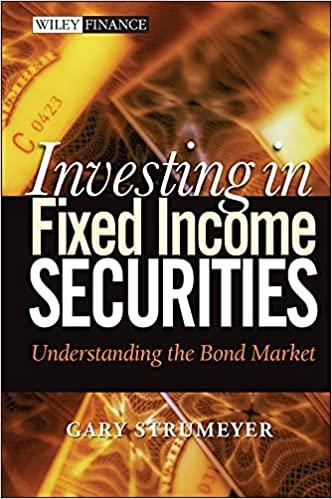Answered step by step
Verified Expert Solution
Question
1 Approved Answer
23) Weighted average cost of capital A firm's CEO has set the company's target capital structure as 40% long-term debt, 10% preferred stock, and 50%


Step by Step Solution
There are 3 Steps involved in it
Step: 1

Get Instant Access to Expert-Tailored Solutions
See step-by-step solutions with expert insights and AI powered tools for academic success
Step: 2

Step: 3

Ace Your Homework with AI
Get the answers you need in no time with our AI-driven, step-by-step assistance
Get Started


